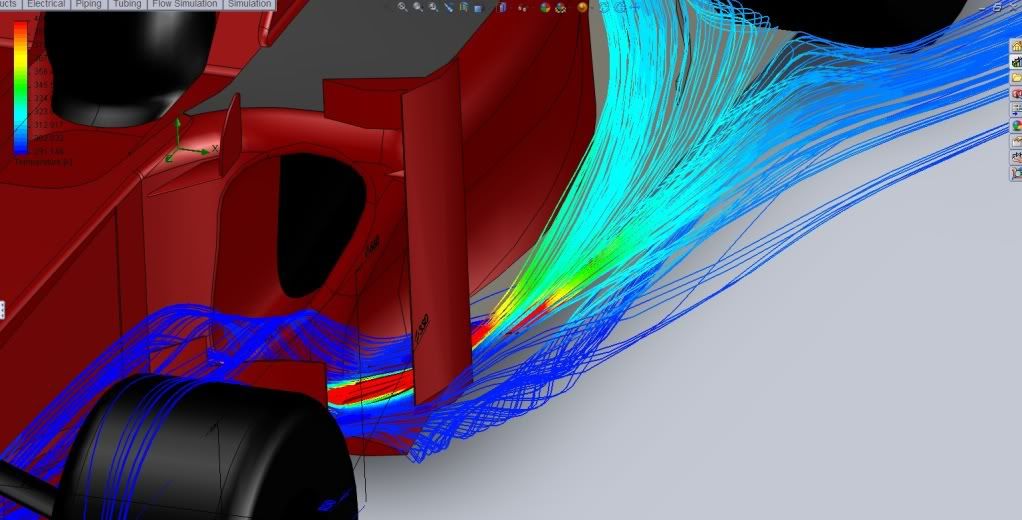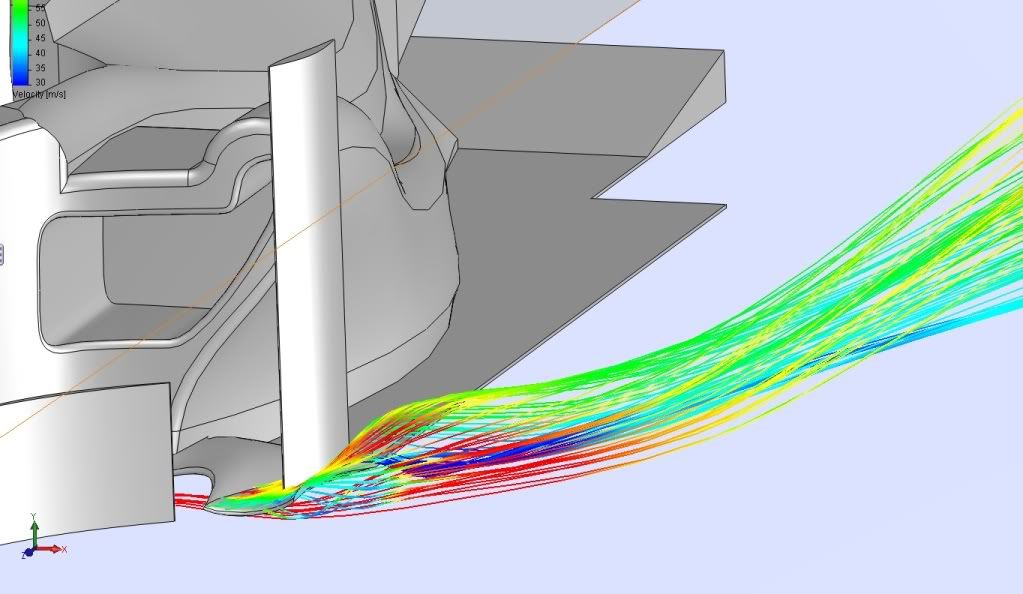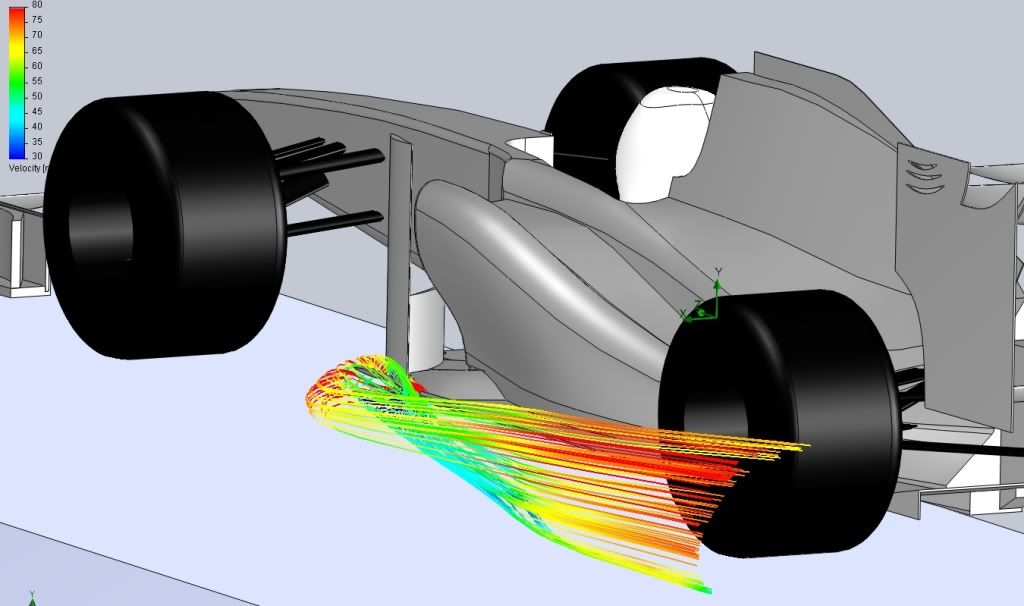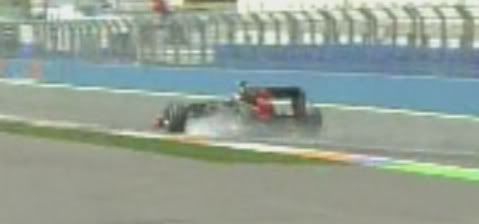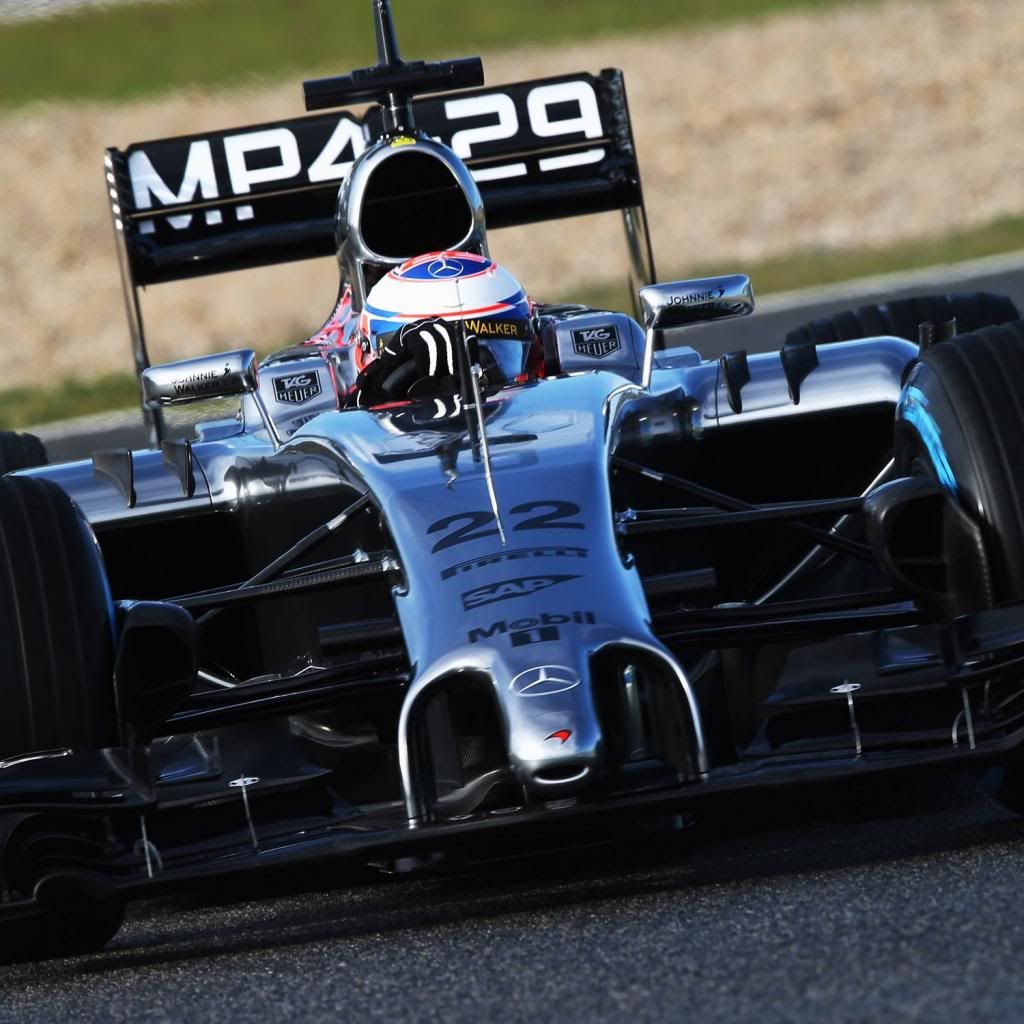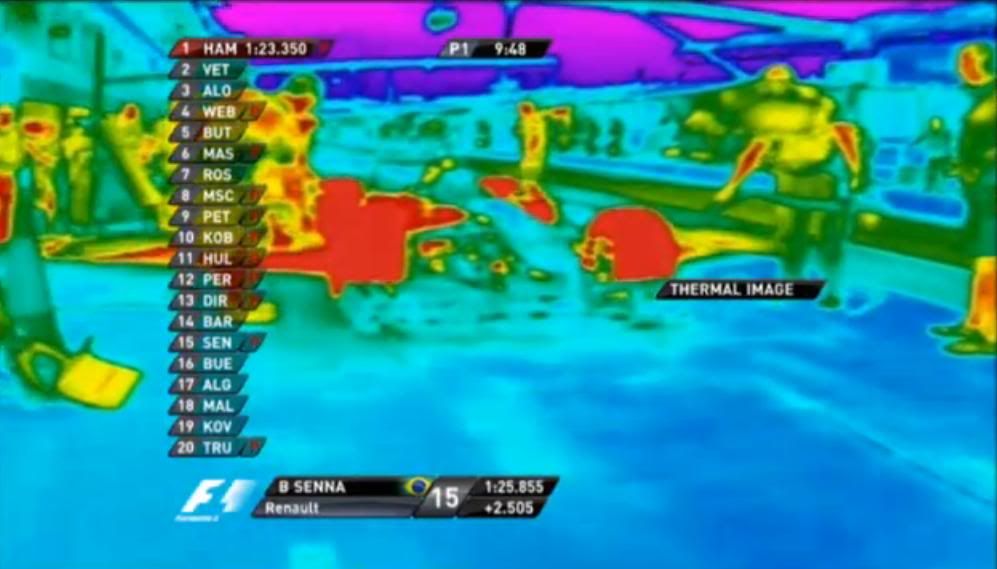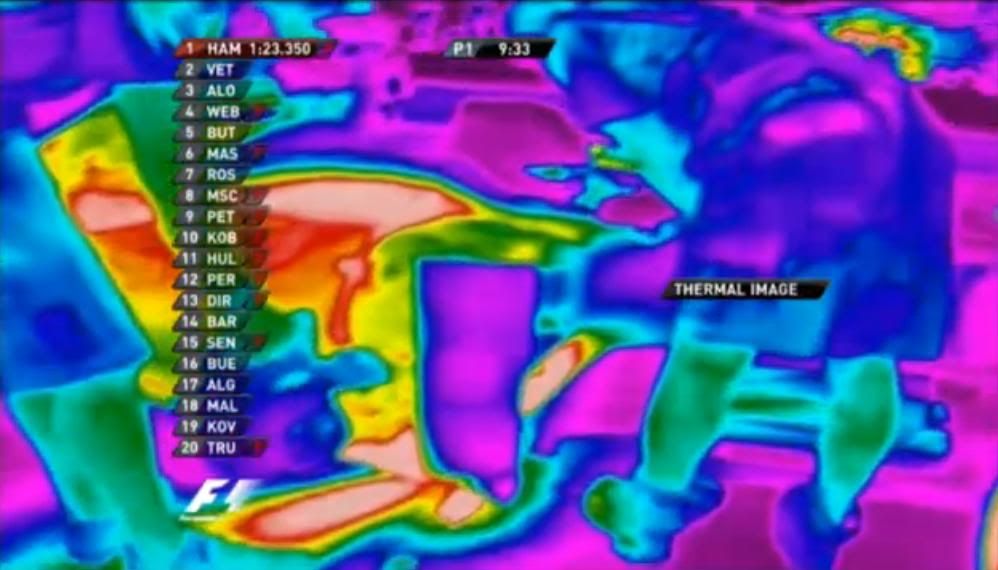ringo wrote:No.Pierce89 wrote:sorry I also meant to add this quote in with my last post as what Hardingfv32 says exactly what I mean when I said the vortex would have to pass under the floor to lower the pressure under the floor.hardingfv32 wrote:Ringo
"But what i do know as a fact, is that in both cases, vortex and no vortex, the gases do not go under the floor."
This is another broad statement. May we assume you mean the gases do not flow under the complete floor length? Does not some exhaust have to flow under the front outer corner of the floor to form the vortex?
Brian
Does a wing tip vortex pass under any floor?
I'll just stand by for now and watch the techno babble unforld. I think there are enough facts already in the thread that readers can draw from.
Due to the pressure difference across its two sides, the bargeboard develops two vortices; the lower one gets squashed under the floor and provides a certain amount of downforce due to its low pressure core acting on the floor surface. cp in the core of this vortex is around -3; it is spinning very fast.
What allison says is that the fee, as the ebd, it is designed to interact with the vortex, strenghten it and lower the pressure in the core. It is not used directly as a jet, but as an twist enhancer for an existing vortex (be it the ebargeboard vortex at the front oor the footplate vortex at the rear). The exhausts get twisted under the floor with this vortex.
So ringo, you are not understanding which is the vortex they are talking about. It is a tip vortex, but it's the vortex that goes under the floor from the tip of the bargeboard.
As I wrote before, if in your model the bargeboard is not working and does not develop the two vortices, you have no chance of seeing this type of interaction.


